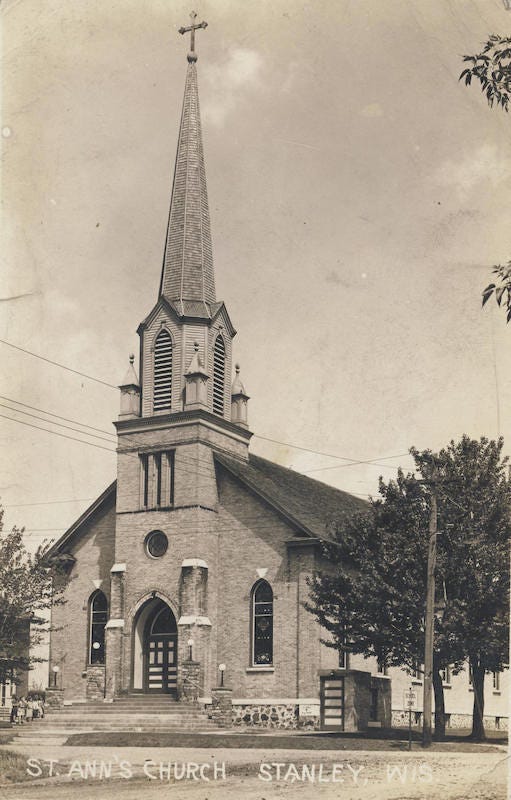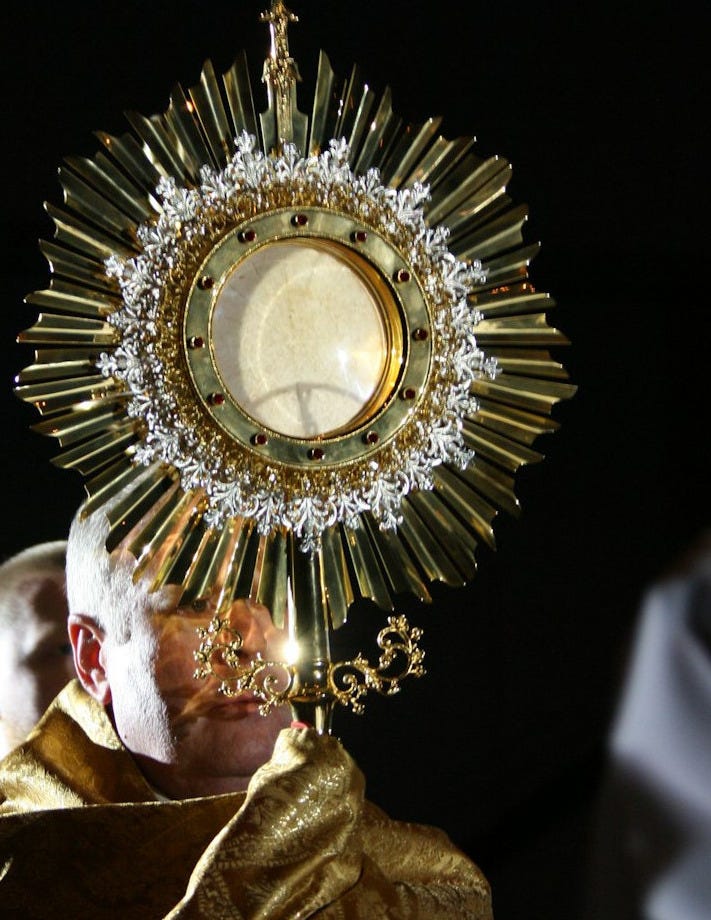Last Saturday, Mélo’Men, the choir I sing with here in Paris, rehearsed at a church in the 5th arrondissement, Église Saint-Jacques-du-Haut-Pas, a few steps from the Latin Quarter. I’m providing a link in the caption of the photo below to the Wikipedia page (in English) about the church. I don’t usually link to Wikipedia, but the page for this particular church strikes me as exceptionally informative with a variety of great images that gives a fairly complete impression of the building’s beauty and historical significance.

Mélo’Men is singing a concert of sacred music in June with several other choirs at Saint Sulpice, the third largest church in Paris with one of the world’s most renowned organs. Yes, we will be accompanied by an organist—and for one piece by two organists! You may remember Saint Sulpice from the The Da Vinci Code. The church appears in the book as the site of a gnomon, an astronomical device designed to measure the position of the sun. Dan Brown, in his novel, concocts a lot of fantastic notions around this particular gnomon. The truth is that the Gnomon of Saint Sulpice was built in the early 1700’s as a way to determine the date of Easter.
In any case, I found myself this past Saturday in a church, the day before Palm Sunday, singing Duruflé’s Requiem, Vierne’s Messe Solemnelle, and Franck’s Dextera Domini. During the three hour rehearsal, as I stood in this wondrous space, I was transported back to third and fourth grade, at Saint Anne’s Catholic School in Stanley, Wisconsin. There, I first learned to sing the requiem, in those last years before the reforms of Vatican II took hold. Every so often, my class would march down the street to the church on cold, snowy, mornings, to join the older students, and lift our youthful voices together to accompany some stranger’s burial ritual. By fifth grade, however, the Mass was in English, for the most part, and Latin requiems were no longer being sung by school children in remote Midwestern towns. I remember looking forward to those funerals, much as I looked forward to the rituals of the Easter season each year, and especially Holy Week.
For me, as a young boy, the first signal that Easter was near came when I entered the church and all the statues were draped in purple shrouds. This happened on the fifth Sunday of Lent or what we called Passion Sunday. St. Anne’s had a fair number of statues, including several of the Virgin Mary and Jesus, St. Joseph, I think there was one of St. Theresa (the Little Flower), maybe St. Francis or Anthony, and, of course, St. Anne herself, the mother of Mary. The large crucifix hanging above the main altar was also veiled. Not the cross part, only the sensuous, nearly naked, bleeding body of Jesus. How many gay Catholic artists have fantasized about that tortured dude on the cross? We’ve watched him come erotically alive in several movies that I can think of, sexualized him in novels and poems, “stud-ified” him visually in all kinds of art, and even submerged him in piss. It’s hard to get that guy out of our creative processes. And then for two weeks out of the year, he gets wrapped in luxurious purple fabric—hidden. It’s all so mysterious to comprehend, especially for an 8 year old gay boy.
Last week, I was surprised to see the few statues at Saint Jacques-du-Haut-Pas boldly on display. I asked one of my colleagues in the choir why none of the statues or the crucifix were shrouded and he said that in France this is not the custom. I was disappointed.
I don’t have a lot of clear memories of Palm Sunday. I recall receiving the palms each year—the long, exotic strands of wide, dry grass, which my mother would eventually place behind the copy of Da Vinci’s Last Supper which hung above our table. My Polish grandfather would weave last year’s palms into strange forms and give them to family members. Otherwise, the old palms had to be brought to church and burned. The ashes would be used for next year’s Ash Wednesday cinders.
I think the congregation would have a procession with the new palms, if the weather was good. We would leave the church, go out onto the sidewalk, and walk up and down the street in front of the school, the rectory, the convent, and the parking lot. I don’t remember any music.
The next big event was Holy Thursday. The mass and ceremonies on this night commemorated the Last Supper. All the schoolchildren were given candles that had to be lit at a certain point. The candles had a paper drip protector and the nuns scolded us severely if we purposely tried to make the wax drip or “accidently” extinguished our candle. Did you know there is word for those candle drip protectors? It’s a French word, but is also used in English: bobèche. Bobèches are “an annular device used for catching wax,” and can be found in paper, glass, or ceramic.
The important elements of the Holy Thursday mass, as I remember them, were the transfer of the consecrated hosts to the side altar and the washing of the feet. Mass is not celebrated on Good Friday. It’s the only day of the year that there is no Mass. So at the Thursday evening Mass enough hosts are consecrated so that Communion can still occur on Friday. Those extra hosts are not kept in the main tabernacle. The central altar is stripped of its linens and decorations and the tabernacle is emptied. The contents are transfered to one of the side altars in the church, which has been prepared to take on this important task. I believe the candles we held were important for the procession that occurred at this time of transference, when the priest led the congregation through the church holding the monstrance. Monstrance is another word which held all sorts of associations for me as a kid. It’s a very short leap from monstrance to monster, and as the priest carried the consecrated Host in procession, the idea of keeping something “monstrous” locked up filled me with a kind of terror.
The primary priest also washes the feet of any other priests that are helping him during the Thursday service, and also the altar boys. In today’s church, I understand that community members (and even women!) are selected to have their feet washed in this ceremony commemorating Jesus’ command to his disciples to practice humility and compassion. There were no women allowed in the sanctuary in those days before Vatican II. I recall straining to see the details of the washing, but it was mostly far away and hidden from view.
Those are the ceremonies I remember most. Good Friday and the Easter Vigil also were full of mystery and celebration, but those days reverberate in my body-memory more for the storytelling—the reading of the Passion, the Way of the Cross, the Gospel of the Resurrection—and a lot of incense. I can’t forget the incense. One time, after I had become an altar boy, the priest reprimanded me for using too much incense. We were supposed to spoon, carefully and frugally, the crystals onto a burning piece of charcoal inside the censer. I overdid it and filled the entire church with pungent smoke, almost asphyxiating the mourners at the funeral I was assisting. I always liked the incense.
After the reforms occurred, the religious rituals lost a lot of their mystery for me. Of course, I was also older and we had moved to the suburbs of Chicago—a large, airy, bright, contemporary church—not the same as the candlelit, warm, atmosphere of St. Anne’s. It’s the St. Anne’s experience that has stayed with me and fills me even today in Paris as I struggle to find some meaning to the events in the world—and sing with a sense of hope that we can make it through this darkness.
Some Other Easter thoughts…
Easter is my favorite holiday, if you haven’t guessed. I like the fact that the holiday, despite its Christianization, still carries the pagan name. I love all the flowers. Except for Easter lilies, which I have become severely allergic to. The Easter baskets and chocolate. When I was a kid, I’d get up early, before anyone else, find the hidden Easter baskets, and go back to bed. When we woke up later, my brother would get mad because I always knew exactly where to find my basket. No one ever figured out my secret. I guess I always had a little bit of a duplicitous streak in me. Oh, well.
I love watching Easter Parade. I had never seen it on TV and I first experienced the film on a big screen in a cinema in London in 1975. I think it’s my favorite Judy Garland movie. Everyone in it is great—Fred Astaire, Ann Miller, the Waiter, even Peter Lawford. And the Irving Berlin songs! If you haven’t seen it lately, it’s worth a watch.
Some of my favorite memories of our life in Akron and at Overwood are the Easter dinners—baked ham, lamb stew, Polish and/or Greek specialities—and the egg hunt in the backyard—if it wasn’t raining or snowing. How many years did we do that?
In Paris, spring is in full bloom this Easter. Léo will spend Thursday night with us and receive a basket on Friday morning. He’s going out of town with his mother for the weekend. I will try to get him to watch at least parts of Easter Parade. We’ll see how that goes.
Happy Easter everyone.





Happy Easter to you and Jairo :)
Wow! Reading your experiences and having absolutely no way to relate! We had a few years of hidden easter baskets but no churching -- after that Easter came and went without my attention. Until Jesus Christ Superstar came out and I was able to rock out some kind of understanding of the situation. I did like the character of Judas (Murray Head) better than JC, although Ian Gillan's vocals were transcendent in a musical sort of way. Thanks for the reminder it is this weekend. I will be in the garden. Wishing you and Jairo all the best!